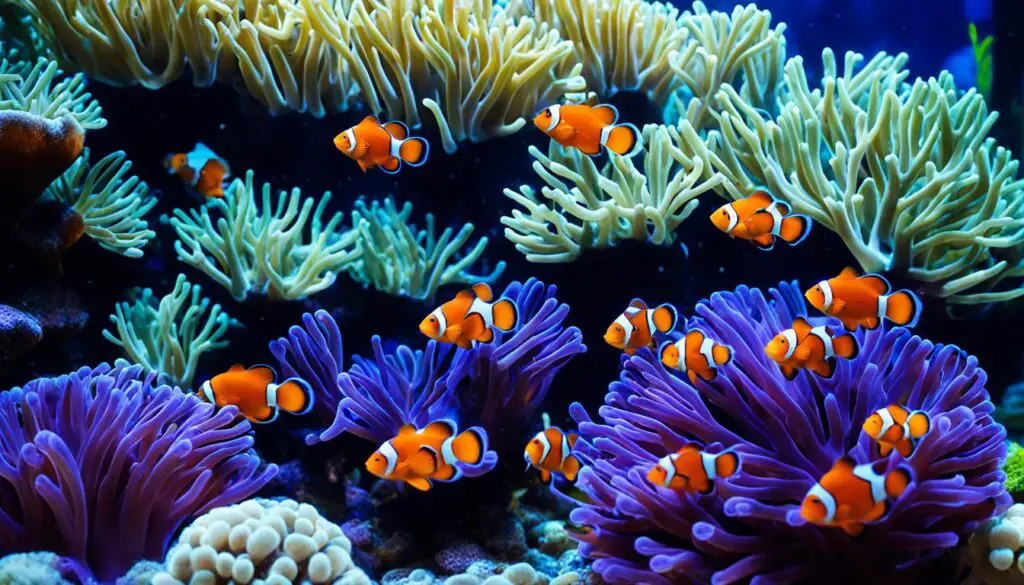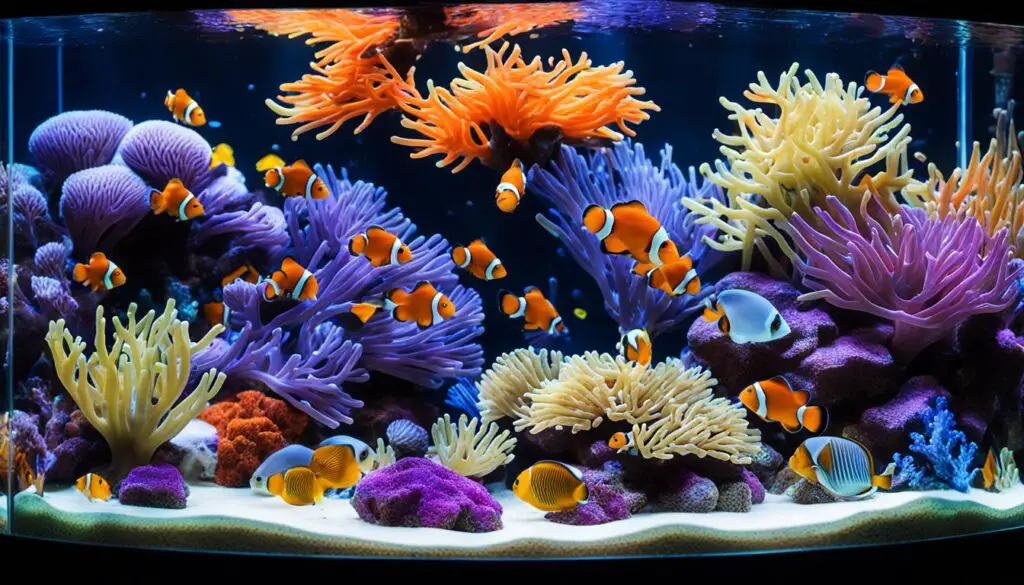How Long Do Sea Turtle Eggs Take To Hatch
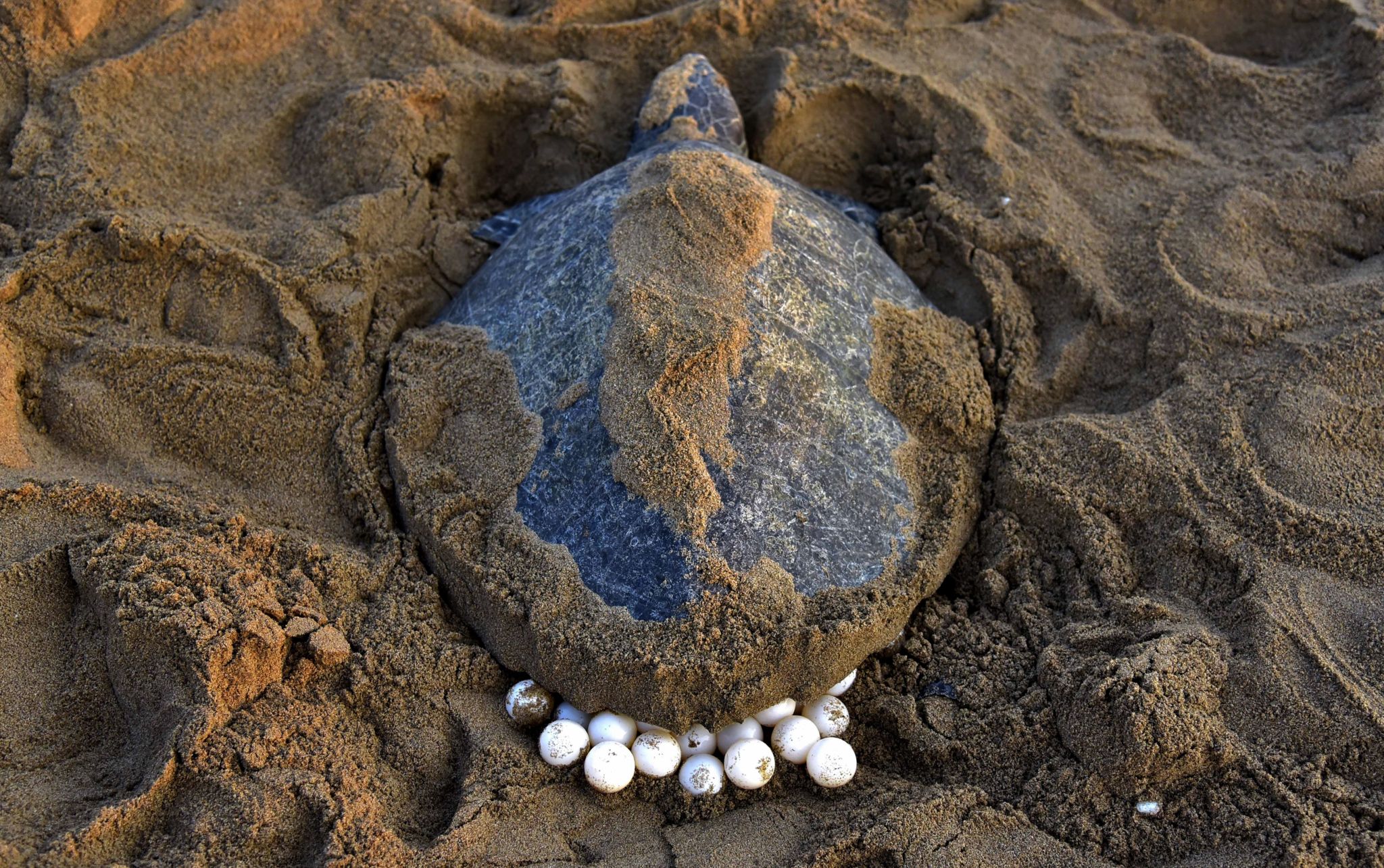
Introduction
How Long Do Sea Turtle Eggs Take To Hatch: The fascinating journey of sea turtle eggs from the moment they are laid to their eventual hatching is a marvel of nature’s precision and patience. Sea turtles, ancient mariners of the ocean, have been fascinating scientists and conservationists for generations. One crucial aspect of Turtle life cycle is the incubation period of their eggs, which varies depending on several factors.
Sea turtle eggs are typically laid by the female turtle on sandy beaches, carefully concealed in a nest. The time it takes for these eggs to hatch can be influenced by environmental conditions, such as temperature and humidity, as well as the species of sea turtle. On average, sea turtle eggs take approximately 45 to 70 days to hatch, but this can vary significantly. For instance, the leatherback sea turtle, the largest of all sea turtles, usually has a longer incubation period compared to other species.
Understanding the intricacies of sea turtle egg incubation is crucial for their conservation. Researchers and conservationists closely monitor nesting sites to ensure the safety of these fragile eggs and increase the chances of successful hatching. This knowledge also aids in the development of conservation strategies to protect these incredible creatures that have roamed the world’s oceans for millions of years.
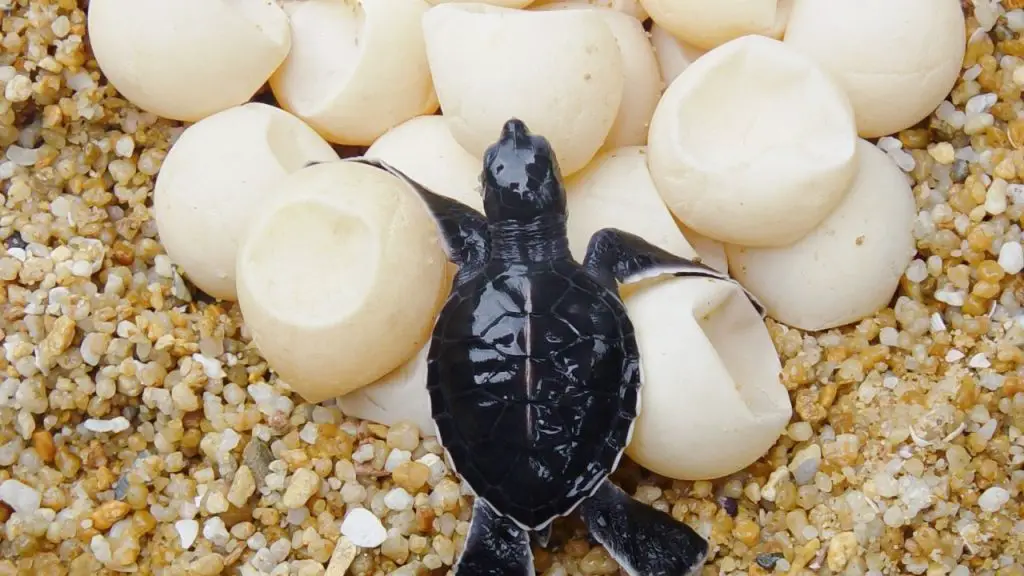
Why do turtle eggs not hatch?
Changes in temperature and other beach conditions are potential factors when turtle eggs fail to hatch, and aligning estimated time of death with recorded weather conditions can help field researchers determine the potential cause of death.
Turtle eggs may fail to hatch for several reasons, each highlighting the delicate nature of this critical stage in a sea turtle’s life cycle. Environmental factors, primarily temperature and humidity, play a pivotal role. If the nest temperature strays too far from the optimal range or if the humidity levels are inadequate, the embryos may not develop correctly, leading to non-viable eggs.
Predation is another significant threat. Natural predators, such as crabs and birds, can unearth and consume turtle eggs before they have a chance to hatch. Additionally, human interference, habitat destruction, and coastal development can disrupt nesting sites, inadvertently damaging the eggs or causing nests to be abandoned.
Disease and pathogens can also affect the embryos, leading to failed hatching. The presence of pollutants in the sand can negatively impact the eggs’ development, posing a significant threat to the survival of sea turtle populations.
Understanding the myriad challenges that sea turtle eggs face is crucial for their conservation. Efforts to protect and monitor nesting sites, as well as mitigating the impact of climate change and habitat destruction, are essential in ensuring that more of these precious eggs have the opportunity to hatch and contribute to the survival of these ancient and remarkable creatures.
Do sea turtle eggs hatch during the day?
After the female lays her eggs they incubate for about 50-65 days. The eggs hatch at night when it is cooler, and the hatchlings can make it to the water and avoid predators. Sea turtle hatchlings have many of predators.
Sea turtle eggs typically do not hatch during the day; instead, they hatch at night. This nocturnal hatching behavior is an adaptation that enhances the survival chances of the baby turtles. There are several reasons behind this phenomenon.
Firstly, hatching at night provides the newly emerged hatchlings with the cover of darkness, reducing their vulnerability to predators. During daylight hours, the beach is more exposed, making it easier for potential threats like birds and crabs to spot and prey on the hatchlings. In contrast, the darkness of the night offers some degree of protection.
Secondly, the cooler nighttime temperatures are more favorable for the hatchlings as they make their way from the nest to the ocean. Cooler sands help regulate the temperature of the eggs, preventing them from overheating during the day, which could be detrimental to their development.
Lastly, the moon and natural light cues from the ocean guide the hatchlings towards the water at night. Moonlight reflects off the water, providing a bright, visible path that leads the hatchlings in the right direction—the sea. This natural navigation system is more effective in the absence of daylight.
The nighttime hatching behavior of sea turtles is a remarkable survival strategy that increases their chances of reaching the safety of the ocean while minimizing exposure to potential dangers during the day.
Why do turtles hatch at night?
Hatchlings usually wait until night to emerge from the nest. Emerging at night reduces exposure to daytime predators. Studies have shown that some nests will produce hatchlings on more than one night. For most sea turtle species, undisturbed nests can have more than 90% of the clutch successfully hatch.
Turtles hatch at night as part of a well-evolved survival strategy. This nocturnal hatching behavior is crucial for the survival of these vulnerable creatures for several reasons.
Predation Avoidance: The cover of darkness offers hatchlings protection from a range of predators, including birds, crabs, and other coastal animals. In the absence of daylight, it’s more challenging for these predators to locate and prey on the hatchlings, increasing their chances of survival.
Cooler Temperatures: The sands on many nesting beaches can become scorching hot during the day, potentially harming the developing turtle embryos. Hatching at night allows the young turtles to emerge into cooler sand, preventing overheating and ensuring their delicate physiology remains intact.
Guided by Moonlight: Many turtle species use moonlight reflecting off the ocean as a navigational cue. This natural light source guides the hatchlings toward the water, helping them reach their essential marine habitat safely. Daytime hatching might lead them astray, away from the life-sustaining ocean.
Reduced Human Interference: Nighttime hatching minimizes the chances of human interference, as most beachgoers are not present on the shoreline during the late hours. This reduction in disturbances helps protect both the nesting turtles and their hatchlings.
The decision to hatch at night is a well-adapted survival strategy that has evolved over millions of years, enabling turtles to optimize their chances of successfully reaching the safety of the ocean and beginning their remarkable journey as marine creatures.
How do you protect turtle eggs?
Build a nest cage to protect turtle eggs and hatchlings if turtles are nesting on your property.
Protecting turtle eggs is essential for the conservation of these endangered and vulnerable species. Conservation efforts focus on safeguarding the eggs during their incubation period, and here are some key measures to achieve this:
Nest Monitoring: Conservationists and volunteers monitor nesting beaches to identify and protect sea turtle nests. This involves marking and recording nest locations, which helps ensure they are not accidentally disturbed or destroyed.
Nest Relocation: In areas with a high risk of nest disturbance or erosion, conservationists may relocate turtle eggs to safer locations. This is done carefully to mimic the natural nest environment and reduce the risk of predation and environmental factors affecting hatching success.
Predation Prevention: Measures are taken to deter or protect against natural predators such as crabs, raccoons, and birds. These can include using screens, cages, or other physical barriers to shield the nests.
Public Education: Raising awareness among local communities and beachgoers about the importance of sea turtle conservation is crucial. Educating people about the negative impacts of disturbing nests and providing guidelines for responsible beach behavior can help reduce human interference.
Light Management: Artificial lights can disorient hatchlings, leading them away from the ocean. Coastal areas often implement “turtle-friendly lighting” ordinances to minimize light pollution during nesting seasons.
Beach Preservation: Protecting and preserving the natural beach environment is essential. Coastal development, erosion control structures, and other human activities can disrupt nesting sites. Ensuring beaches remain in their natural state is vital for sea turtle nesting success.
These combined efforts help protect turtle eggs and increase the chances of hatchlings surviving to begin their remarkable journey in the ocean. Conservationists and communities worldwide work tirelessly to ensure the future of these incredible marine creatures.
Do sea turtle eggs need air?
As they are developing, the embryos breathe air through a membrane in the eggs, and so they cannot survive if they are continuously covered with water. If disturbed, sea turtles will sometimes nest.
Sea turtle eggs do not require air once they are buried in the sand. When a female sea turtle comes ashore to lay her eggs, she carefully digs a nest hole in the sandy beach. After depositing her eggs in the nest, she covers them with sand, creating a protective environment. The sand provides insulation and moisture retention, creating a suitable microclimate for the developing embryos.
Sea turtle eggs are porous, allowing them to exchange gases with the surrounding environment. Oxygen from the air is absorbed through the eggshell, while carbon dioxide is released. However, once the eggs are buried in the sand, they rely on the oxygen stored within their membranes and the air pockets in the sand around them.
In fact, exposing sea turtle eggs to air for an extended period can be harmful or even fatal to the developing embryos, as it disrupts the delicate balance of gases and can lead to suffocation. Therefore, it’s crucial for beachgoers and conservationists to be cautious and avoid disturbing sea turtle nests, ensuring that these incredible creatures have the best chance of hatching and continuing their remarkable life cycle in the world’s oceans.
Do all sea turtle nests hatch at the same time?
Sea turtle nests typically exhibit a staggered or asynchronous hatching pattern. This means that while all the eggs in a single nest were laid during the same nesting event, they may not all hatch simultaneously. Instead, hatchlings emerge over a period of time, which can span several days to a couple of weeks.
Several factors contribute to this staggered hatching phenomenon. Firstly, temperature plays a crucial role. The temperature within the nest influences the rate of embryo development. Warmer nests tend to produce hatchlings earlier, while cooler nests may result in a delayed emergence.
Additionally, genetic variation among the eggs in a nest can also impact the timing of hatching. Some eggs may develop faster than others due to genetic differences.
Natural environmental conditions, such as tidal fluctuations, rainfall, and even predation, can affect the timing of hatching. These factors can either accelerate or delay the emergence of hatchlings from their nests.
The staggered hatching strategy provides some advantages for sea turtles. It ensures that not all hatchlings are exposed to the same environmental risks at once, increasing the chances of survival for at least some of the young turtles. It also helps spread out the pressure on local resources like food sources and nesting sites, ultimately benefiting the overall population.
Which species of sea turtles have shorter incubation periods?
Among the various species of sea turtles, the Kemp’s ridley sea turtle (Lepidochelys kempii) typically has the shortest incubation period. The incubation period refers to the time it takes for sea turtle eggs to develop and hatch within the nest.
Kemp’s ridley sea turtles are known for their relatively fast development compared to other sea turtle species. Their eggs generally incubate for about 45 to 55 days, making it one of the shortest incubation periods among sea turtles. This shorter incubation time is thought to be an adaptation to the specific environmental conditions of their primary nesting grounds in the Gulf of Mexico and along the Atlantic coast of the United States.
In contrast, other sea turtle species like the loggerhead, green, and leatherback turtles have longer incubation periods, often ranging from 50 to 70 days or even more, depending on factors such as temperature, humidity, and other environmental variables. These longer incubation periods are essential for the proper development of the embryos inside the eggs, ensuring that the hatchlings are fully formed and ready for the challenging journey from nest to sea.
The Kemp’s ridley sea turtle’s shorter incubation period is a fascinating adaptation that allows them to thrive in their unique nesting environments, where fast development can be advantageous for hatchling survival.
What can be done to help protect sea turtle nests during the incubation period?
During the crucial incubation period of sea turtle nests, several measures can be implemented to ensure the protection and survival of these remarkable creatures. Firstly, it is essential to identify and mark nesting sites to prevent accidental disturbances. Placing barriers or signs around the nesting areas can deter human interference, reducing the risk of nest destruction. Local communities, conservation organizations, and authorities must collaborate to enforce strict regulations against activities such as beachfront development, artificial lighting, and vehicular traffic that can disorient hatchlings.
Education plays a vital role. Raising awareness about the importance of sea turtles and their nesting sites can lead to greater public involvement in their protection. Implementing community-based programs and workshops can foster a sense of responsibility among residents and tourists alike.
Additionally, trained volunteers and researchers can monitor nesting beaches regularly. By collecting data on nesting activities, they can identify trends and respond promptly to threats like erosion or predation. Moreover, nest relocation may be necessary if a nest is at risk due to natural events like high tides or storms.
Ultimately, protecting sea turtle nests during the incubation period requires a multifaceted approach that combines legislation, education, monitoring, and proactive conservation efforts to ensure the survival of these magnificent marine creatures for generations to come.
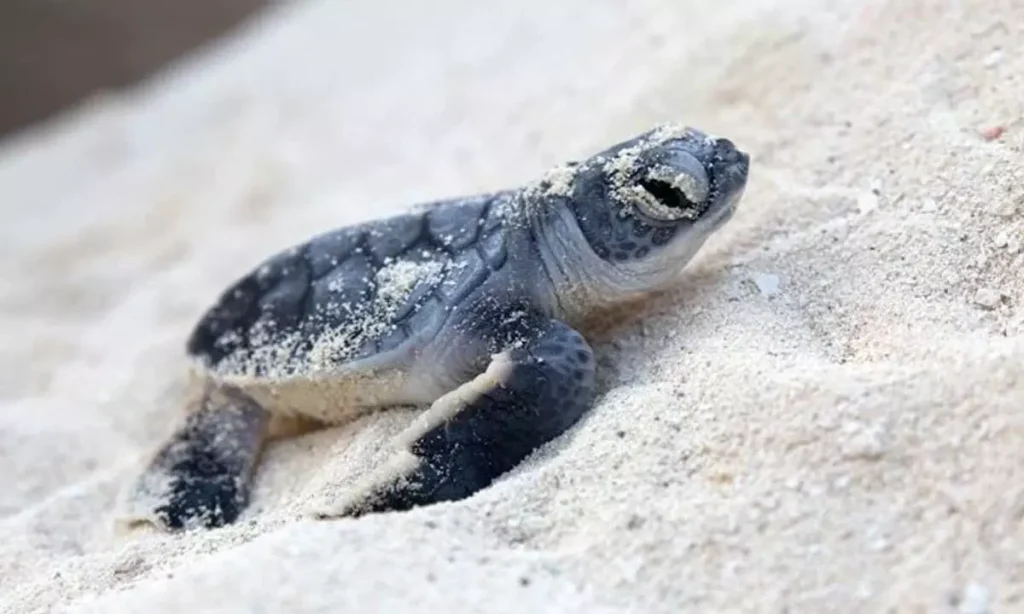
Conclusion
The journey of sea turtle eggs from nest to hatchling is a remarkable and delicate process. We’ve learned that the incubation period for these eggs is not set in stone but rather subject to various factors. Temperature and humidity play a crucial role in determining the exact duration, with an average range of 45 to 70 days.
The diversity among sea turtle species further underscores the intricacies of this process. Leatherback sea turtles, for instance, often require a longer incubation period than their counterparts. This variability highlights the adaptability of these creatures to their unique environments.
Understanding the factors influencing sea turtle egg incubation is not only a matter of scientific curiosity but also a vital component of their conservation. Conservationists and researchers must closely monitor nesting sites to safeguard these precious eggs from natural threats and human disturbances. By doing so, we can enhance the chances of successful hatching and contribute to the preservation of these ancient mariners.
In unraveling the mysteries of how long sea turtle eggs take to hatch, we gain a deeper appreciation for the resilience of these incredible creatures and the delicate balance that sustains them. As stewards of our oceans, it is our responsibility to protect and conserve these remarkable animals for generations to come.


